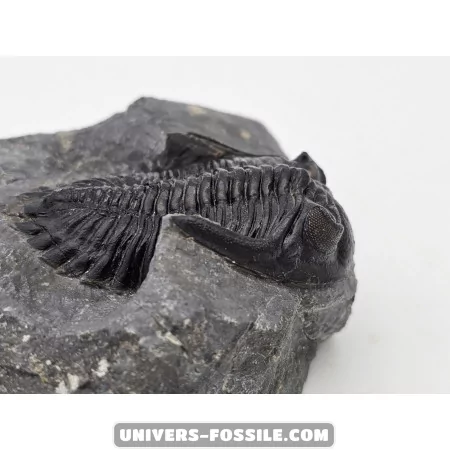Hollardops Trilobites - Ancient Marine Fossils | Trilobite Extinction | Prehistoric Oceans

Unveiling the Enigmatic Hollardops Trilobites
Hollardops trilobites are an extinct species of trilobites, a group of marine arthropods that thrived millions of years ago. These fascinating creatures were among the prominent inhabitants of the Paleozoic oceans, offering paleontologists valuable insights into ancient marine life.
Anatomy of Hollardops Trilobites
Hollardops trilobites were characterized by their segmented body into three distinct lobes, hence their name. Here are some of the most remarkable anatomical features of these creatures:
- Segmented body: Like all trilobites, Hollardops had a body divided into three longitudinal parts - the cephalon (head), the thorax (body), and the pygidium (tail).
- Calcified exoskeleton: The outer shell of trilobites was formed of chitin and calcite, providing rigid protection against predators.
- Compound eyes: Hollardops trilobites possessed large compound eyes, consisting of many small hexagons, giving them a panoramic view of their environment.
- Antennae: Although few fossilized specimens have retained their antennae, it is likely that Hollardops had them to detect environmental stimuli.
- Segmented legs: Trilobites used their segmented legs to move along the seafloor, sifting through the sediment in search of food.
Embrace the mystique of the ancient marine world with the Hollardops trilobites. These exceptional creatures provide a glimpse into a bygone era, captivating enthusiasts and researchers alike with their unique features and intriguing behaviors.
Hollardops Trilobites
Hollardops trilobites were ancient marine creatures that existed around 390 to 370 million years ago during the Middle to Upper Devonian period. These fascinating creatures inhabited the seas filled with diverse marine life, positioning themselves as both predators and prey within the ecosystem.
Habitat: Fossils of Hollardops have been unearthed in various geological formations across the globe, including regions like Morocco, Spain, Germany, and the Czech Republic. These discoveries provide invaluable insights into the distribution and evolutionary history of this particular trilobite species.
Lifestyle: As typical benthic organisms, Hollardops likely resided on the seafloor, engaging in the consumption of organic detritus and small organisms residing in the substrate. Their distinct segmented appendages enabled them to filter and capture their food efficiently.
Interaction with Predators: Hollardops trilobites served as prey to various marine predators during their time, including cephalopod mollusks and predatory fish. While their robust exoskeleton offered some defense, evidence of damage from predator attacks and diseases can be observed in many excavated specimens.
Extinction: Similar to all trilobite species, Hollardops eventually faced extinction, marking the end of an era for these fascinating marine creatures that roamed the ancient seas millions of years ago.
Hollardops Trilobites
Trilobites, an ancient group of marine arthropods, roamed the oceans for over 270 million years. Hollardops, a genus of trilobites, eventually became extinct by the end of the Permian period around 250 million years ago, during the mass extinction event that wiped out most life on Earth. The exact causes of trilobite extinction remain a topic of debate among paleontologists, but it is likely they were influenced by climatic changes, geological events, and evolutionary pressures.
Despite their extinction, Hollardops trilobites and other members of their order continue to fascinate scientists and paleontology enthusiasts worldwide. Their well-preserved fossils offer valuable insights into the biodiversity and evolution of ancient oceans, allowing us to better understand the history of life on Earth.
In conclusion, Hollardops trilobites are fascinating examples of the diversity of ancient marine life. Their fossils are precious treasures that allow us to travel back in time and explore the mysteries of prehistoric oceans.
